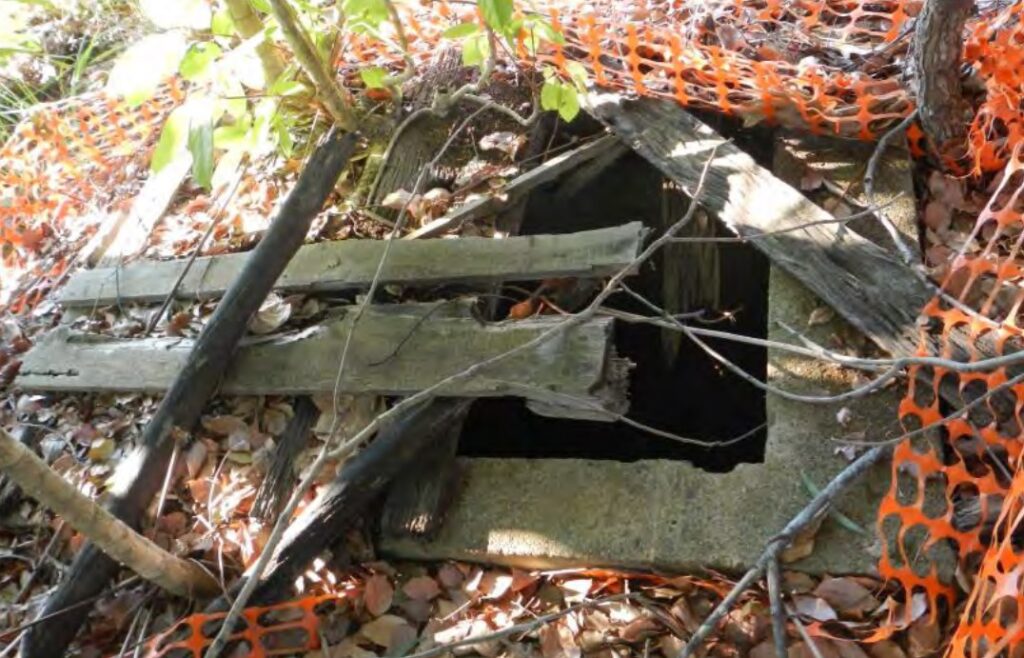
The Cordalba Water Reserve demonstrates the evolution of the region’s history, particularly the establishment of the village of Cordalba and the reliance in the early phases of settlement on water infrastructure.
Also known at the Cordalba Well, the area is situated on the corner of Clayton and Hodges Road and is listed as part of Bundaberg Regional Council’s Register of Local Heritage Places.
History of the Cordalba Water Reserve
Cordalba was selected as the location for a village settlement scheme (overseen by Henry Jordan MLA, Queensland Minister for Land and Works 1887-8) and settlement first began in 1888.
The scheme, like most land acts in Queensland in the nineteenth century, was developed to encourage closer settlement of unoccupied land.
The conditions of the scheme meant that a selector took up 40 acres and had to erect a residence and make various improvements such as clearing and fencing, and in return they would receive an allotment in the village.
Cordalba was one of the first village settlements in Queensland.
The Knockroe Sugar Mill was erected nearby in 1890 and this ensured the local farmers focused on growing sugar cane.
The village, however, took somewhat longer to develop.
A provisional school was opened in 1894, but even by this time not a single village allotment had been cleared and built on.
The first building was the Cordalba Hotel, built in 1894 on the site of the current Commercial Hotel.
The construction of the hotel spurred further development in the village, with a blacksmith, butcher, baker and store appearing soon after.
A second hotel, the Royal, opened in 1895.
A second storey was added in 1896-7.

The addition to the hotel was no doubt triggered by construction of the Cordalba railway branch from Childers, which opened in 1896.
The citizens of Cordalba were also instrumental in the establishment of the Isis Central Co-Operative Mill, which began operations in 1896.
The presence of the mills and the railway spurred closer settlement of the district and Cordalba became the principal village in the North Isis.
It was later connected by rail to Booyal and Dallarnil in 1913.
By the 1920s, there were approximately 1,000 people living in the district and the village boasted four churches, three hotels, a club, stores, newsagencies, cafes, motor garage and workshops, post and telegraph office and a railway station, in addition to the state school and amenities such as a recreation ground and racecourse.
The district also included a sizable Russian community who supported the Tsar in the Russian civil war (1917-23) and fled to Australia.
The water reserve
The Cordalba Water Reserve was gazetted as a water reserve, and it is believed that the first town well is located in the reserve.
The reserve was also the location of a strike camp during the 1911 sugar strike.
Sugar workers had begun to organise themselves into unions and became increasingly involved with the Queensland Labor Party.
Sugar workers in the Isis district (and Bundaberg and other sugar districts in Queensland) were part of the Amalgamated Workers’ Association (AWA) in 1911 when they struck for better working conditions and pay, in particular an eight hour work day.
The AWA contacted the directors of the various mills to discuss the demands, but the organisation was rejected.
The 1911 sugar strike, as it came to be called, spread throughout Queensland.
Strike camps were created in the Isis district in two key locations; one near Childers, and the other in Cordalba, located in the water reserve.
There were tense scenes in and around the mills in the district, including a near riot in Childers and the potential threat of gelignite used to destroy mill equipment (stolen from the Cordalba railway store).
The strike was settled in August 1911, with most of the key union demands met.





Very interesting article indeed as my block is very near the old well, of which I investigated just before buying my block. What I discovered at the well was not good as some people had been throwing trash and some clothing down the well over the years also the barricades was just some orange plastic light fence. The discarded clothing down the well was a mystery so I used a torch to see if anything nasty had happened in the past but I couldn’t see well enough as 4years ago the water was near level with the top of the well. It is a good spot and needs some distinction as a historical land marked site. It’s a shame that some drivers cut the corner from Hodges rd to Claytons and causing some damage to the grass at the site specially after the site has been flooded. Seems the drainage of overflow waters at Claytons rd needs to be upgraded as the pipes are not designed to handle some heavy rain advents that is around 80mm to 100 mm rainfall and more.
bit of a poor representation. Cordalba came under a special government development. there were several of these places. Records can be found at the archives and i have viewed these and even found the first survey plan of the proposal mixed up in the documents. i showed that to Cr. Trevor a few years back. he might have forgot.